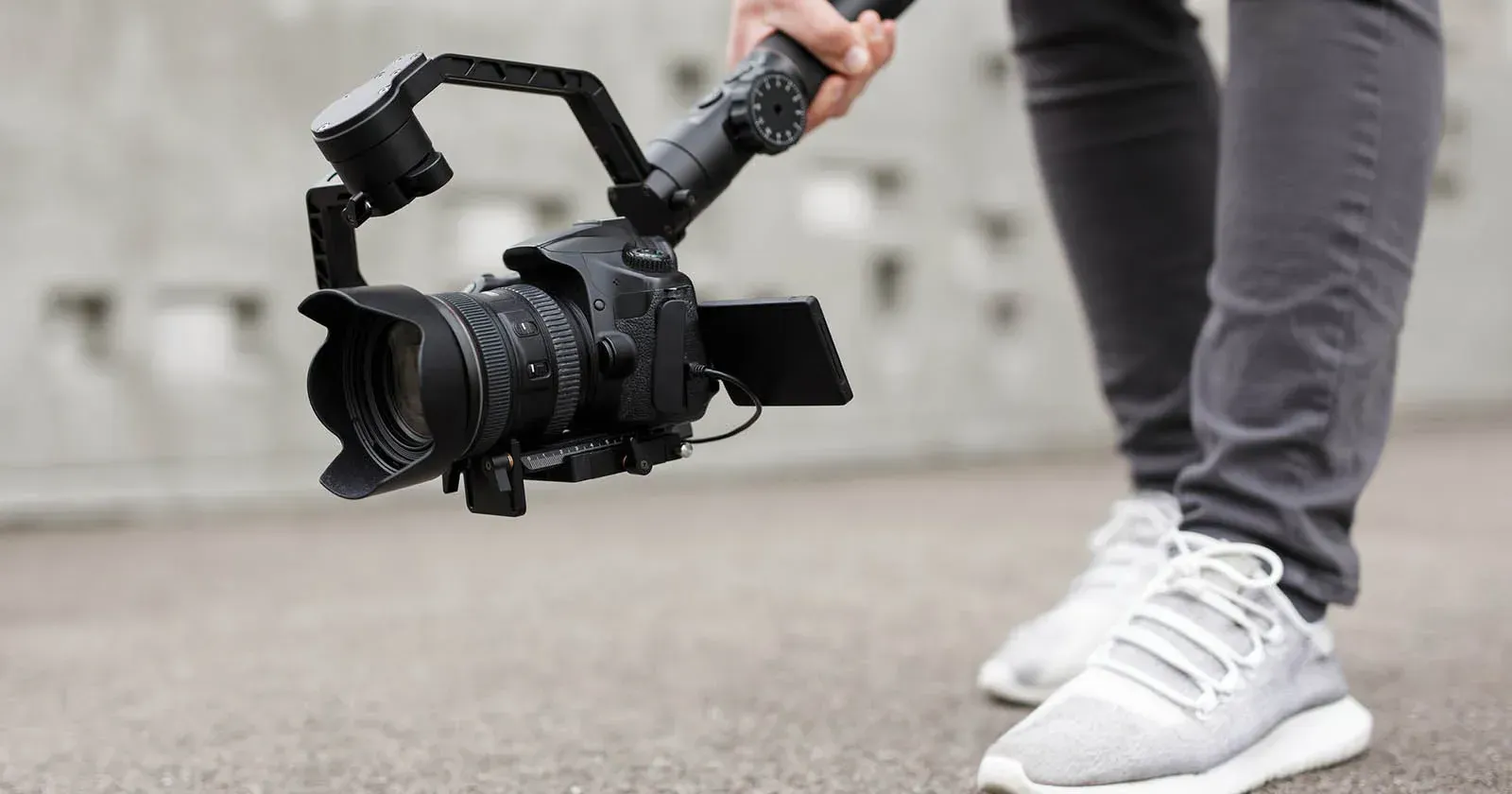Tips & Ideas

In today's digital landscape, Facebook advertising is a powerful tool for businesses of all sizes. But one of the most common questions we get from our clients is, "How much should I spend on Facebook ads?" The answer varies based on several factors, including your business goals, industry, and audience. In this guide, we’ll walk you through the key considerations to help you determine the right budget for your Facebook ad campaigns. 1. Define Your Goals Before you set a budget, it’s crucial to define what you want to achieve with your Facebook ads. Common goals include: Brand Awareness: Reach a large audience to increase visibility. Lead Generation: Collect contact information from potential customers. Sales and Conversions: Drive traffic to your website and encourage purchases. Engagement: Increase likes, comments, and shares on your posts. Each goal may require a different budget. Generally, we recommend a minimum of $3-$5 USD per day (approx. $5-$8 NZD). 2. Understand Your Audience Your target audience can significantly impact your ad spend. Narrowing your audience to a specific demographic, interest, or behaviour can make your ads more effective but may also increase costs. Conversely, a broader audience can lower costs but might not be as targeted. Facebook's audience insights tool can help you find the right balance. 3. Consider Your Industry Some industries are more competitive than others, meaning higher costs per click (CPC) or cost per thousand impressions (CPM). For example, highly competitive industries like finance or insurance often see higher ad costs compared to less competitive sectors. 4. Start Small and Scale If you’re new to Facebook advertising, start with a small budget. This approach allows you to test different ad creatives, audiences, and bidding strategies without a significant financial commitment. As you gather data on what works and what doesn’t, you can gradually increase your budget to scale successful campaigns. 5. Use Facebook’s Budgeting Tools Facebook offers several budgeting options, including: Daily Budget: The average amount you’re willing to spend per day. Lifetime Budget: The total amount you’re willing to spend over the entire duration of the ad campaign. These tools help you control your spend and ensure you don’t exceed your budget. 6. Monitor and Adjust Continuous monitoring and adjustment are key to a successful Facebook ad strategy. Regularly review your ad performance and adjust your budget based on what’s working. Metrics to watch include click-through rates (CTR), conversion rates, and return on ad spend (ROAS). 7. Get Professional Help Navigating Facebook ads can be complex, but you don’t have to do it alone. At Digital Pulse Media, we offer expert Facebook Ad design and set-up services to ensure your campaigns are optimised for success. Our team will help you: Create compelling ad creatives that capture attention. Target the right audience to maximise ROI. Monitor and adjust campaigns for optimal performance. By leveraging our expertise, you can focus on what you do best—running your business—while we handle the intricacies of Facebook advertising. Summary Determining the right budget for your Facebook ads involves a mix of understanding your goals, audience, and industry. Starting small, using Facebook’s budgeting tools, and continuously monitoring performance are crucial steps. As a general indication, we recommend a minimum of $3-$5 USD per day (approx. $5-$8 NZD). And remember, professional help can make all the difference in creating effective and profitable Facebook ad campaigns. Contact Digital Pulse Media now for professional ad design and set-up services that drive results. "What you do, is worth the hype." Digital Pulse Media

In today’s digital age, Facebook isn’t just a platform for connecting with friends and family; it’s a powerful tool that can help you earn money. Whether you're a small business owner, an aspiring influencer, or simply looking to make some extra cash, there are numerous ways to monetise your presence on Facebook. Here’s a comprehensive guide to help you get started. 1. Sell Products or Services Facebook Marketplace Facebook Marketplace allows you to buy and sell items locally. It’s an excellent way for individuals and small businesses to reach a wider audience without incurring additional costs. You can sell anything from handmade crafts to second-hand goods. Facebook Shops (not available in all countries) Facebook Shops is a feature that allows businesses to create a customisable online store on Facebook and Instagram. It’s ideal for businesses that want to provide a seamless shopping experience directly on the platform. 2. Affiliate Marketing Affiliate marketing involves promoting products or services from other companies and earning a commission for every sale made through your referral link. You can share affiliate links on your Facebook profile, pages, or groups. Ensure you disclose that you’re using affiliate links to maintain transparency and trust with your audience. 3. Create Engaging Content Sponsored Posts If you have a substantial following, brands may pay you to promote their products or services. Sponsored posts are a great way to earn money if you’re an influencer or have a niche audience that brands want to reach. Ad Breaks in Videos Facebook allows you to monetise your video content through ad breaks. To qualify, you need to meet Facebook’s eligibility criteria, such as having at least 10,000 followers and generating 30,000 one-minute views on videos that are at least three minutes long in the past 60 days. 4. Utilise Facebook Ads Facebook Ads is a powerful tool for reaching a large audience. You can use it to drive traffic to your website, promote your products, or generate leads for your services. By creating compelling ads and targeting the right audience, you can significantly increase your sales and revenue. 5. Offer Online Courses or Workshops If you’re an expert in a particular field, you can create and sell online courses or workshops on Facebook. Use Facebook Groups to create a community around your niche and offer exclusive content to group members. You can charge a membership fee or a one-time payment for access to your courses. 6. Crowdfunding and Donations If you’re working on a project that requires funding, such as a creative endeavour or a charitable cause, you can use Facebook’s fundraising tools. Set up a fundraiser on Facebook to collect donations from your followers and supporters. 7. Freelance Services Offer your freelance services, such as graphic design, writing, social media management, or consulting, through your Facebook profile or page. Join relevant Facebook Groups where potential clients may be looking for your expertise. 8. Facebook Gaming If you’re a gamer, you can monetise your gameplay through the Facebook Gaming platform. Earn money through fan donations, sponsorships, and ad revenue while streaming your gaming sessions. 9. Host Virtual Events With the rise of virtual events, you can host webinars, workshops, or live Q&A sessions on Facebook. Charge a fee for attendance or offer paid access to exclusive content during the event. Tips for Success: Build a Strong Presence: Consistently post engaging content that resonates with your audience. Use high-quality images and videos to capture attention. Engage with Your Audience: Respond to comments, messages, and feedback. Building a community around your brand or persona is crucial for long-term success. Leverage Analytics: Use Facebook Insights to track your performance and understand what type of content works best for your audience. Stay Updated: Facebook constantly updates its features and algorithms. Stay informed about the latest changes to make the most of the platform. By leveraging the diverse monetisation opportunities on Facebook, you can turn your social media presence into a profitable venture. Whether you’re selling products, promoting affiliate links, or creating engaging content, the key to success lies in consistency, engagement, and understanding your audience. Start exploring these options today and watch your Facebook earnings grow! "The money you make is a symbol of the value you create." Idowu Koyenikan

In the world of Facebook advertising, two primary options stand out: boosted posts and meta ads. Both serve as valuable tools for reaching target audiences, but understanding their differences and knowing which one is better suited for your marketing goals can significantly impact the success of your campaigns. Let's delve into the disparities between boosted posts and meta ads and explore which option might be the best fit for your business. Boosted Posts : Boosted posts are a straightforward way to amplify the reach of your organic content. They appear directly on your Facebook page and are created by clicking the "Boost Post" button beneath your post. Boosted posts allow you to target specific audiences based on factors like location, age, gender, interests, and behaviour. They're a quick and easy way to increase visibility and engagement for your existing content, such as photos, videos, text posts, or events. Pros: Simplicity : Boosted posts are user-friendly and don't require extensive knowledge of Facebook Ads Manager. Increased Visibility : They can help your content reach a wider audience, including people who don't already follow your page. Engagement : Boosted posts often result in higher engagement rates, including likes, comments, and shares. Cons: Limited Targeting Options : While you can target specific demographics, boosted posts offer fewer advanced targeting features compared to meta ads. Limited Objectives : Boosted posts are primarily focused on increasing engagement rather than driving specific actions like website clicks or conversions. Budget Control : There may be limitations in controlling your budget and optimising ad delivery compared to ads created through Ads Manager. Meta Ads (Facebook Ads Manager) : Meta ads, on the other hand, are created using Facebook's Ads Manager platform. They offer a wider range of customisation options and are designed to achieve specific marketing objectives, such as brand awareness, lead generation, website traffic, or conversions. Meta ads can include various ad formats, such as carousel ads, slideshow ads, video ads, or collection ads, and they provide more sophisticated targeting capabilities, including custom audiences, lookalike audiences, and detailed demographic targeting. Pros: Advanced Targeting : Meta ads offer extensive targeting options, allowing you to reach highly specific audiences based on demographics, interests, behaviours, and more. Diverse Ad Formats : You can choose from a variety of ad formats and placements to suit your campaign objectives and creative preferences. Optimisation and Tracking : Ads Manager provides robust tools for ad optimisation, A/B testing, and detailed performance tracking, helping you refine your campaigns for better results. Cons: Learning Curve : Ads Manager can be complex for beginners, requiring time and effort to master its features and functionalities. Resource Intensive : Creating and managing meta ads may require more time, resources, and strategic planning compared to boosted posts. Cost : While meta ads offer greater control and customisation, they may require a higher budget to achieve desired results compared to boosted posts. Choosing the Right Option : Ultimately, the decision between boosted posts and meta ads depends on your specific marketing objectives, target audience, budget, and resources. If you're looking to quickly boost engagement and visibility for your existing content, boosted posts can be a convenient option. However, if you have specific campaign goals, require advanced targeting capabilities, or seek to drive specific actions like website conversions, meta ads through Ads Manager may offer a more effective solution. In conclusion, both boosted posts and meta ads have their advantages and limitations, and the best approach is often a combination of both, tailored to your business goals and audience needs. By understanding the differences between these Facebook advertising options and strategically leveraging them in your marketing efforts, you can maximise your reach, engagement, and return on investment. "You cannot make progress without making decisions." Jim Rohn

In the dynamic world of digital marketing, video ads have emerged as a powerful tool to capture attention and engage audiences. With Facebook's vast reach and sophisticated targeting options, running video ad campaigns on the platform can yield exceptional results for your business. To ensure your success, we've compiled seven essential tips to help you master your Facebook video ad campaigns: 1. Know Your Audience Before even thinking about creating your video ad, take time to understand your target audience. Who are they? What are their interests, pain points, and behaviours? This knowledge will guide your content creation and ensure your video resonates with your intended viewers. 2. Craft a Compelling Story The best video ads tell a story. Craft a narrative that connects with emotions, values, or aspirations. Whether it's showcasing a customer success story, highlighting your brand's journey, or solving a common problem, a compelling story can capture attention and leave a lasting impression. 3. Optimise for Mobile The majority of Facebook users access the platform on mobile devices. Design your video ad to be mobile-friendly, with clear visuals, concise messaging, and subtitles for viewers who watch without sound. A visually appealing and easy-to-digest video will perform better on mobile screens. 4. Hook in the First Few Seconds The first few seconds of your video are crucial for grabbing viewers' attention. Use visually striking imagery, a surprising statement, or an intriguing question to captivate your audience from the start. The goal is to entice them to watch the entire video. 5. Keep It Short and Engaging Attention spans are short in the digital age. Aim for a video length of less than 15 seconds to maintain engagement. Deliver your message concisely and maintain a fast-paced, engaging editing style to retain viewers' interest. 6. Clear Call to Action (CTA) What do you want viewers to do after watching your video? Whether it's visiting your website, signing up for a newsletter, or making a purchase, include a clear and compelling call to action. Place it strategically in your video and provide a seamless path for users to take the desired action. 7. A/B Test and Analyse No campaign is complete without testing and optimisation. Create variations of your video ads and test different elements, such as headlines, visuals, and CTAs. Monitor key metrics like click-through rates, engagement, and conversions to identify which versions perform best. Use these insights to refine your strategy and achieve better results over time. In the ever-evolving landscape of digital marketing, Facebook video ad campaigns offer a potent way to connect with your audience and achieve your business goals. By understanding your audience, crafting compelling stories, optimising for mobile, hooking viewers early, keeping content concise, including a clear CTA, and conducting A/B tests, you'll be well on your way to creating impactful and successful video ad campaigns on Facebook. Remember, consistency and adaptability are key. Stay up-to-date with industry trends, continually refine your approach, and be ready to pivot as needed. With dedication and strategic planning, your Facebook video ad campaigns can become a valuable asset in your marketing arsenal! “The play button is the most compelling call-to-action on the web.” Michael Litt

In today's digital age, a strong online presence is essential for any business. One of the most powerful tools at your disposal is a well-optimised Facebook Business Page. With billions of active users, Facebook offers an unparalleled platform to connect with your target audience, build brand loyalty, and drive sales. In this blog, we'll guide you through proven strategies to get the best out of your Facebook Business Page and achieve remarkable results. Optimise Your Page: Your Facebook Business Page is your digital storefront, so make it inviting and informative. Use a high-quality profile and cover photo, and ensure your business details are accurate and up-to-date. A compelling "About" section that highlights your mission, products, and services will pique the interest of visitors. Create Engaging Content: Consistent and engaging content is key to keeping your audience interested. Share a mix of posts, including informative articles, entertaining videos, stunning visuals, and behind-the-scenes glimpses of your business. The more engaging and valuable your content is, the more likely it is to be shared, increasing your reach. Know Your Audience: Understanding your target audience is crucial for tailoring your content to their preferences. Utilise Facebook Insights to gather data on your audience's demographics, interests, and behaviours. Use this information to create content that resonates with your audience and sparks meaningful interactions. Utilise Visual Storytelling: Visual content has a powerful impact on social media. Incorporate eye-catching images and videos that tell a story about your brand. Visual storytelling captures attention and helps build an emotional connection with your audience, making them more likely to remember your business. Engage and Respond: Social media is a two-way street. Respond promptly to comments, messages, and reviews. Show appreciation for positive feedback and address concerns professionally and empathetically. Active engagement enhances your brand's reputation and fosters a sense of community. Leverage Facebook Advertising: Facebook offers a range of advertising options to promote your business. Create targeted ads based on demographics, interests, and behaviours to reach a specific audience. Experiment with different ad formats, such as carousel ads, video ads, and sponsored posts, to find what works best for your business. Host Contests and Giveaways: Contests and giveaways are a fantastic way to boost engagement and reward your followers. Encourage users to participate by liking, sharing, or commenting on your posts. Not only do these activities increase your page visibility, but they also generate excitement around your brand. Monitor Analytics: Regularly analyse your Facebook Insights to track the performance of your posts and overall page. Identify trends, understand what content resonates the most, and adjust your strategy accordingly. This data-driven approach allows you to continuously improve your page's effectiveness. Your Facebook Business Page is a dynamic tool that can greatly enhance your brand's online presence. By optimising your page, creating engaging content, understanding your audience, and leveraging Facebook's advertising capabilities, you can harness the platform's potential to drive business growth and build a loyal community of followers. Remember, success on Facebook requires dedication, creativity, and a commitment to delivering value to your audience. Start implementing these strategies today and watch your Facebook Business Page thrive like never before! "Successful people do what unsuccessful people are not willing to do." Jim Rohn

Why should I buy from You?? What is your UVP? (Unique Value Proposition) Unique value proposition (UVP), also known as a unique selling proposition (USP), is a clear statement that describes the benefit of your offer, how you solve your customer's needs and what distinguishes you from the competition. Your unique value proposition should appear prominently on your landing page and in every marketing campaign. It is arguably the most important element of your overall marketing messaging. A value proposition tells prospects why they should do business with you rather than your competitors, and makes the benefits of your products or services crystal clear from the outset. The UVP helps customers understand why the option you provide is right for them. When you include it in marketing materials and integrate it into your customer experience, it helps customers make a decision and, at times, helps them explain their decision to others. A well-articulated rationale can give them confidence in their purchase—and even help turn them into a brand advocate. Ultimately, as a business owner, your UVP distinguishes your business’ offer from others. To figure out your unique value proposition, you need to understand what you do well, what your customers want/need, and how you stand out. The following four-step process walks you through ascertaining these things and translating them into drafts of your UVP: List out your product's or service's benefits Research your customers Reasearch your competitors Write it and test it List out your product/service' benefits - Make sure you understand what you do well. One way to do this is with a “FAB statement” exercise: features, advantages, benefits. List each of your product’s or service’s features, then for each one, list what the feature accomplishes (advantage) and why a potential customer would value that (benefit). For example, one FAB for a headphones brand might be: Feature: cushioned ear pads Advantage: more comfortable use Benefits: longer, more enjoyable listening sessions Research you customers - Customer research helps you understand what your customers want and need. Start by doing market research on your target audience, and if you have existing customers, interview them about why they bought from you and what their pain points were. This can take the form of a buyer persona . Research your competitors - Researching your competitors is an important part of crafting your UVP—it informs how your product can stand out. You may have found an incredible customer need, and a great product to fulfill it, but if another product’s benefits already fulfill that need in the same way, you’ll have a hard time succeeding. As you research, aim to dig into at least three well-known competitors your customer would consider. For each, list its features and how they communicate them. When you’ve done that, look for gaps: What benefit does your product/service have that your competitors’ products/services don’t? This is your starting point for the next step. Write it and test it - Once you’ve completed the three exercises above, you should have a clear sense of what you do well, what your customers want/need, and how you can stand out. Now, you can put it all together in a UVP statement. Tell your customers what sets you apart from the rest........ What do you offer that your competitors don't?

What is your customers PAIN? The only way you can get someone to buy your product or service is to make them WANT it. What problem are you fixing and what is the solution? Or what desire are you fulfilling? What value are you offering your customers? What are they gaining from using your product/service. A pain point is a specific problem that prospective customers of your business are experiencing. In other words, you can think of pain points as problems, plain and simple. Although you can think of pain points as simple problems, they’re often grouped into several broader categories. Here are the four main types of pain points: Financial Pain Points : Your prospects are spending too much money on their current provider/solution/products and want to reduce their spend Productivity Pain Points : Your prospects are wasting too much time using their current provider/solution/products or want to use their time more efficiently Process Pain Points : Your prospects want to improve internal processes, such as assigning leads to sales reps or nurturing lower-priority leads Support Pain Points : Your prospects aren’t receiving the support they need at critical stages of the customer journey or sales process Viewing customer pain points in these categories allows you to start thinking about how to position your company or product as a solution to your prospects’ problems, and what is needed to keep them happy . For example, if your prospects’ pain points are primarily financial, you could highlight the features of your product within the context of a lower monthly subscription plan, or emphasize the increased ROI your satisfied customers experience after becoming a client. However, while this method of categorization is a good start, it’s not as simple as identifying price as a pain point before pointing out that your product or service is cheaper than the competition. Many prospective customers’ problems are layered and complex, and may combine issues from several of our categories above. That’s why you need to view your customers’ pain points holistically, and present your company as a solution to not just one particularly problematic pain point, but as a trusted partner that can help solve a variety of problems. Your "solution" to your customers' pain points can be used in your UVP (Unique Value Proposition). Your UVP is a clear statement that describes the benefit of your offer, how you solve your customer's needs and what distinguishes you from the competition. Your unique value proposition should appear prominently on your landing page and in every marketing campaign.

Who are you talking to? Did you know that you can target French and English speaking women, between the ages of 31-56, who live in a 10 mile radius of Auckland, NZ, who are "fit mum's" of grade school kids? The super-sophisticated level of ad targeting is one of the main reasons to be excited about Facebook Marketing. Hopefully you've dedicated time and resources to analysing your customer base and forming buyer personas; now you can put those personas to use and go after the people who are most likely to be interested in your products or offerings. CAUTION: If you go too specific this strategy can work against you, so keep an eye on the audience definition tool to ensure you're not getting so granular with your persona targeting that no-one sees your ad. As a general rule - don't go too broad and keep out of the red. "Everyone is not your audience."

Don't create a personal profile for your business! There are people that believe using their personal profile as a business page is preferrable over creating a proper business page. Firstly, this goes against Facebook rules and regulations. They can and will shut down your account which means you lose everything. Secondly, a business page gives you far more reach and opportunities to increase your brand and following. With a personal profile, you’re missing out on all of the content creation tools, paid promotional opportunities, and analytics/insights that come with a Facebook Business Page. Plus, a personal profile would require people to send you a friend request in order to engage with you, and the last thing you want to do is make that more difficult for customers. The reason people believe a personal profile is better than a business page is because they already have a large friend group and starting a business page means they start with zero followers. Yes, true. However, when you create a business page from your personal profile you will be able to send invites to your entire friend list on your personal profile. From there, you have more opportunites to grow your business.

